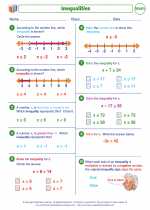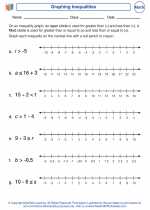Order of Operations
The order of operations is a set of rules that defines the order in which different mathematical operations should be performed. These operations include addition, subtraction, multiplication, division, and parentheses. The purpose of the order of operations is to ensure that everyone gets the same answer when evaluating mathematical expressions.
The Order of Operations Rules:
- 1. Parentheses: Simplify expressions inside parentheses first.
- 2. Exponents: Evaluate expressions with exponents (powers) next.
- 3. Multiplication and Division: Perform multiplication and division from left to right.
- 4. Addition and Subtraction: Perform addition and subtraction from left to right.
One common acronym to remember the order of operations is PEMDAS:
- P: Parentheses
- E: Exponents
- M: Multiplication
- D: Division
- A: Addition
- S: Subtraction
Examples:
Let's go through an example to demonstrate the order of operations:
Example 1: Evaluate the expression 4 + 5 * 3.
According to the order of operations, we should perform the multiplication before the addition. So, 5 * 3 equals 15. Then, add 4 to 15 to get the final answer of 19.
Example 2: Evaluate the expression (6 + 2) * 42.
First, simplify the expression inside the parentheses: 6 + 2 equals 8. Then, evaluate the exponent: 42 equals 16. Finally, multiply 8 by 16 to get the final answer of 128.
Study Guide:
Here are some tips to master the order of operations:
- 1. Memorize the PEMDAS acronym to remember the order of operations.
- 2. Practice solving various expressions using the order of operations rules.
- 3. Use parentheses to clarify the order of operations when needed.
- 4. Check your work by following the order of operations step by step.
Remembering and applying the order of operations is crucial for solving math problems accurately. Understanding these rules will help you simplify complex expressions and equations with confidence.
[Order Of Operations] Related Worksheets and Study Guides:
.◂Math Worksheets and Study Guides Seventh Grade. Equations and Inequalities

 Worksheet/Answer key
Worksheet/Answer key
 Worksheet/Answer key
Worksheet/Answer key
 Worksheet/Answer key
Worksheet/Answer key
 Worksheet/Answer key
Worksheet/Answer key
 Worksheet/Answer key
Worksheet/Answer key
 Worksheet/Answer key
Worksheet/Answer key
